- Home
- Blog
- Embedded Systems
- Embedded Software Engineer Interview Questions

An embedded system is a computer-based solution that combines hardware and software to carry out a certain task. Consistent spending on computers and AI promises to be a boon for the embedded business.
We have covered the most important topics related to embedded software engineer interview questions, from basic concepts through more advanced topics.
Top 10 Frequently Asked Embedded Software Engineer Interview Questions
- What are the essential components of an embedded system?
- Why is an embedded system useful?
- What is Watchdog Timer?
- What is the need for an infinite loop in embedded systems?
- What are some frequent concerns with interrupt handling?
- What skills are required for an embedded software engineer?
- Explain the benefits of using C++ in embedded systems.
- What is the Embedded C concatenation operator?
- Do embedded systems need to be coded?
- Which programming language is best for embedded systems?
| If you want to enrich your career and become a professional in Hardware Design Development, then visit Mindmajix - a global online training platform: "Hardware Design Development Training". This course will help you to achieve excellence in this domain. |
Entry-level Embedded Software Engineer Interview Questions
1) What is an Embedded System in a Computer System?
An embedded system is a computer system embedded in a more extensive system or machine. It is a system that performs a specific function within a more extensive electrical or mechanical system.
2) What are the essential components of an embedded system?
The Essential components of an embedded system are-
- Hardware
- Processor
- Memory
- Timers
- I/O circuits, and
- Software.
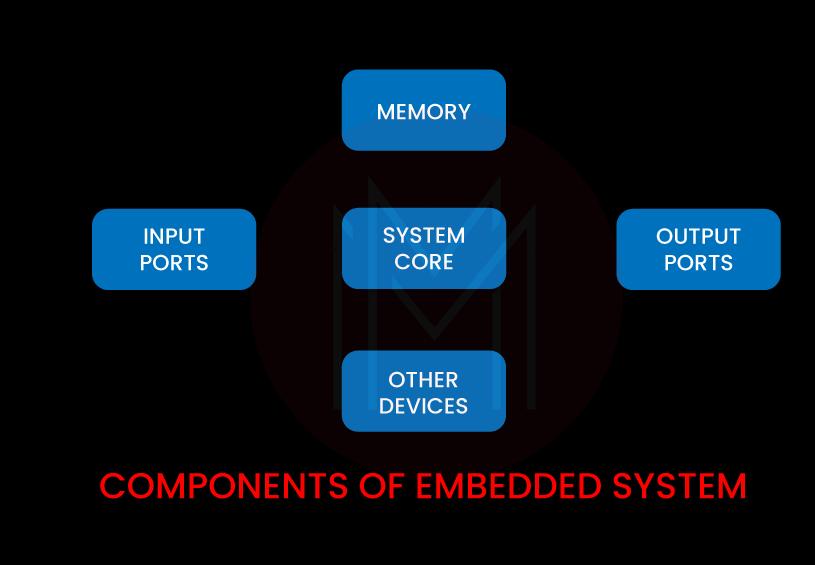
3) Mention the I/O devices that are classified as embedded systems.
The I/O devices of an embedded system are divided into two types: They are
- Serial
- Parallel
4) Explain what "real-embedded systems" are?
The term "real-time embedded system" refers to any computer system that can detect, react to, or exert influence over its physical environment in near real time. Actuators, sensors, and other input/output interfaces allow the computer system to communicate with its external surroundings.
5) What is a Microcontroller?
The microcontroller is a self-contained device that is used in embedded systems. It consists of peripherals, memory, and a CPU.
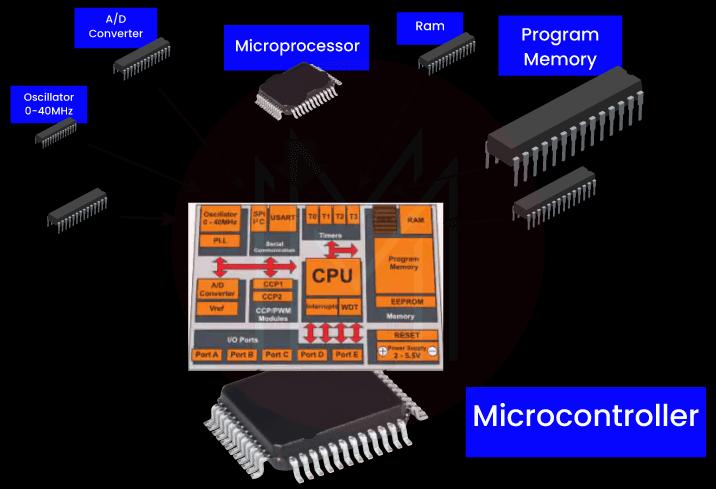
6) Why is an embedded system useful?
An embedded system can successfully take the place of dozens or even hundreds of input buffers, timing circuits, hardware logic gates, output drivers, and many more.
7) What does DMA address will deal with?
DMA address deals with physical addresses. It is a device that drives the data and addresses buses directly during data transfer.
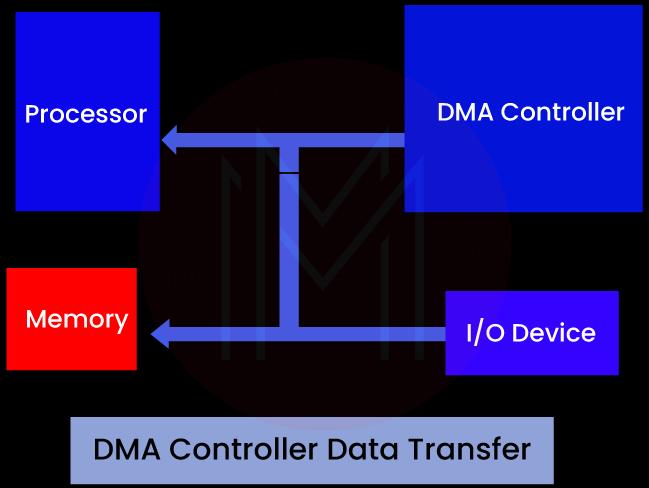
8) What is interrupt latency? How can you reduce it?
Interrupt latency is the time it takes to return from the interrupt service function after handling a given interrupt.
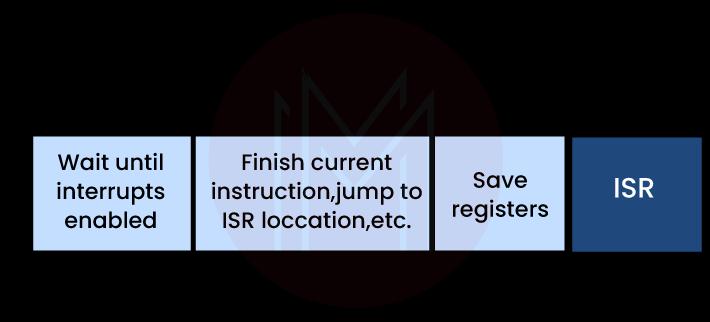
9) What are the buses used for communication in embedded systems?
These are some of the buses that are commonly used for communication in embedded systems:
- I2C is a protocol for inter-IC communication.
- CAN (Controller Area Network) is used in vehicles with a network managed from one location.
- The universal serial bus allows your computer to talk to peripherals like a mouse and keyboard.
- Computers, networking hardware, and the like use parallel communication buses called ISA, EISA, or PCI.
10) What is Watchdog Timer?
When anything goes wrong with an electronic system, a Watchdog Timer triggers certain activities to be carried out after a specific time. It happens if the device or card in question is an electronic one.
Technical Interview Questions For Embedded Software Engineer
11) What is the need for an infinite loop in embedded systems?
Infinite loops are necessary for embedded systems for repetitive processing or monitoring of the program's status. A case in point is a program state continually monitored for runtime faults such as memory exhaustion, division by zero, etc.
| Related Article: Embedded C interview questions |
12) What is Semaphore?
In concurrent systems, such as multiprogramming operating systems, a semaphore is an abstract datatype or variable used to regulate access to a shared resource. Two typical applications for semaphores are
- permitting many processes to use the same region of memory
- signaling the end of a process.
13) Why is a recursive function used? What happens when inline recursion functions are declared?
A recursive function might be useful when you expect the number of recursive calls to be small. When invoked a function with the inline functions attribute, its whole definition will be copied. Compiler performance suffers when inline, recursive functions are used.
14) Explain whether a semaphore, mutex or spinlock can be used in an interrupt context in the Linux kernel.
Semaphores or mutexes cannot be used to interrupt context. Spinlocks, however, can be used to lock in an interrupt context.
15) What are some frequent concerns with interrupt handling?
Almost always, interrupt handlers need to finish their work quickly. The specifics depend on the device and the application, making it hard to do complex things in their code. Here are some common issues when handling interrupts are:
- Most functions in a library.
- Access to devices and other parts.
16) Why are 8-bit microcontrollers still used when there are 32-bit and 64-bit ones?
The first reason is selecting the best tool based on the work. The most popular explanations are price, electrical power consumption, and backward compatibility. Backward compatibility is essential for connecting with existing infrastructure, particularly in industrial applications where electrical and operational limitations frequently influence the selection of microcontrollers.
17) Is firmware and data embedded in microcontrollers generally safe from tampering, downloading, or hacking?
No. Unless the microcontroller was designed to include protections against firmware downloading and/or modification, you should assume that it is straightforward to download and edit any code and data transferred to it. The microcontroller may be the only exception here.
18) Explain what you mean by "Interrupt Latency."
The time it takes for the ISR to respond to an interrupt is called interrupt latency.
19) What do you understand by segmentation fault?
A segmentation fault is the most common type of error and frequently results in program crashes. The lower the latency, the faster the response to an interrupt event.
20) What is a reentrant function?
When the execution of a function is suspended in the middle and resumed without risk, we say that the function is reentrant. Both external events and signals, as well as internal signals, such as a call or a leap, can serve as interruptions. Execution of the reentrant function picks up just where it left off and continues until it's done.
| Related Article: How to embed tableau reports securely on the web? |
Advanced Embedded Software Engineer Interview Questions
21) What to expect from an interview with an embedded software engineer?
During your interview for the role of embedded software engineer, you can anticipate questions pertaining to your background in firmware development, microcontrollers, and real-time operating systems. Questions on your problem-solving abilities and how you would approach various development scenarios are also likely to be included.
22) What skills are required for an embedded software engineer?
The following abilities are important for any embedded software engineer.
- Computer languages C, C++, and Assembly.
- Both microcontrollers and microprocessors are referred to here.
- System software that is based on the Linux kernel.
- Skills in optimizing software for use in a System on a Chip (SoC).
- Real-time OSes (RTOS)
23) What is ISR?
ISR expands to Interrupt Service Routines. These processes are placed in a specified memory address and executed when certain interruptions occur. The term "interrupt" describes the message delivered to the CPU to notify it of a high-priority event that needs quick processing.
24) In Embedded C, what does a void pointer represent, and how is it used?
A void pointer is a pointer that might point to any kind of variable. When referring, it makes no assumptions about the underlying data type, making it a generic pointer. When dereferencing a pointer, it's essential to use what data type should convert to the information. The versatility of void pointers is what makes them so popular. Because it can hold any kind of information, it may reuse it.
25) What is the use of volatile keywords?
The volatile keyword is primarily used to stop compilers from optimizing variables that might unpredictably change their behavior after the optimization.
26) What is the Embedded C concatenation operator?
The "##" symbol denotes the Concatenation operator in programming. It is used in macros to carry out the operation of concatenating the arguments used in the macro. It is important to remember that the arguments' values are not concatenated; just the arguments themselves are.
27) Is it possible to declare a static variable in a header file?
Static variables are global only inside the block in which they are declared and are only initialized once (at program startup time). It is necessary to define any static variables declared in a declaration. To declare a static variable, you must first define it.
28) Which loop is better: one that counts up from zero or one that counts down to zero?
Count-down to zero loops is preferable over count-up loops. The compiler can better optimize the comparison to zero when the loop finishes running. The improvement frees CPU resources by eliminating the requirement to simultaneously load the loop variable and compare the maximum value. Therefore, it is usually preferable to use a countdown loop that ends in 0.
29) Can a variable be both volatile and constant at the same time?
When we want to ensure that the variable value does not change, we use the const keyword.
However, external interrupts or events can still cause the value to change. We can use const with volatile keywords without incident.
30) In Embedded C, what do you mean by a null pointer?
A null pointer is an invalid reference to a memory address. It guarantees that the invalid pointer cannot be used to make any changes. The pointer is considered "NULL" if it does not have an associated address.

31) What do you know about the storage classes in C?
There are four different storage classes in the C programming language:
- automatic
- register
- static
- dextern
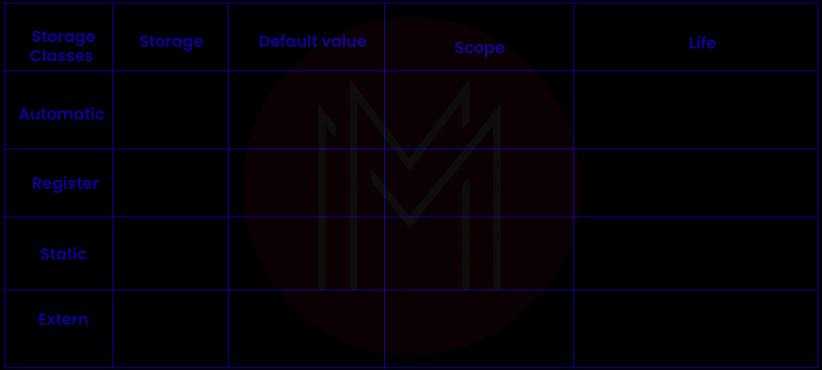
32) Explain the benefits of using C++ in embedded systems.
C++ is a compelling and flexible language that allows programmers to write complex code quickly. C++ compilers are typically very efficient, meaning that programs written in C++ can be speedy. C++ has a wide range of libraries that provide great functionality, making it possible to write comprehensive programs without writing much code from scratch.
33) What are the advantages of using a real-time operating system on a mid-range microcontroller?
RTOSs can provide faster response times to interrupts than a traditional operating system. RTOSs can efficiently use limited resources such as memory and processing power. It is vital for applications that run on low-power devices or have limited resources.
34) What is Embedded C Programming?
Embedded C is a programming language that is a C programming extension.
Given that it frequently appears in embedded systems and has a similar syntax to C, it is known as an "embedded" language. The I/O hardware operations and addressing, fixed point operations, memory/address space access, and several other features required to build fault-tolerant embedded systems are supported by embedded C.
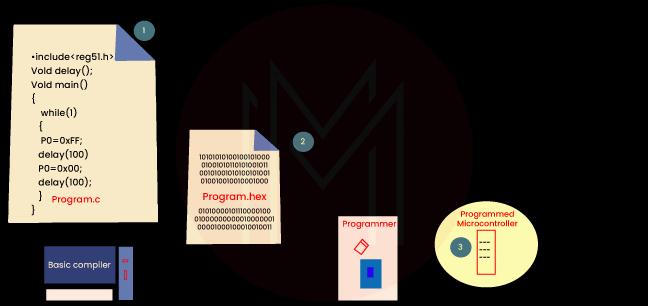
35) What is a startup code?
A startup function is a code executed before the primary function's execution. It is written in assembly language and is used to create a primary platform for the application.
| Related Article: Embeds Machine-Learning Capabilities |
Most Common Embedded Software Engineer FAQ’S
1) What are the characteristics of embedded systems?
Characteristics of an Embedded System are
- Real-Time Operation.
- Processor and Memory.
- Based on Performance and Functional Requirements.
- Sophisticated Functionality.
- Low Manufacturing Cost.
- Tight Design Constraint.
- Based on the Performance of the Microcontroller.
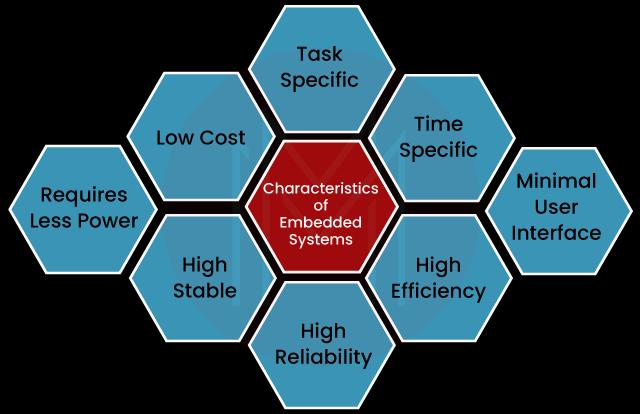
2) What does embedded mean?
As implied by its name, embedded refers to something that is attached to another object. Consider an embedded system to be a computer hardware system in which software is embedded. An embedded system may be a standalone system or a component of a larger system.
3) Which programming language is best for embedded systems?
The most valuable embedded programming languages are
- Java.
- Lua.
- C++.
- Ada..
- Rust.
- Python..
- Assembly.
- Verilog.
4) Is Arduino an embedded system?
Arduino is a prototype platform for making electronic devices that can perceive and be controlled by external input. The goal of this thesis was to develop an embedded system based on a microcontroller that may be used to keep tabs on environmental factors in greenhouses. A website gives the user command over the greenhouse's climate.
5) Do embedded systems need to be coded?
Developers of embedded systems typically work in an embedded programming language. The languages usually provide direct, low-level access to the hardware of the device. Embedded systems development typically involves the use of one of several popular programming languages. Embedded programming languages are another name for them.
6) Is Python required for embedded systems?
Python programming language has become the most widely used in the industry. Yet, because of its straightforward syntax and high level of readability, it is an ideal language for those just starting out in the field of computer programming. It's being put to use everywhere from machine learning to running websites, but embedded programming is where it really shines.
7) Is SQL used in embedded systems?
SQL can be incorporated into nearly all high-level programming languages due to its widespread developer support. Languages like C, C++, Java, etc, offer SQL integration. Some programming languages, such as Python, include built-in libraries for integrating database queries into the code.
8) Which Linux is used for embedded systems?
Yocto, also known as Open embedded, is a widely-used alternative to desktop Linux distributions for embedded systems. Yocto has the backing of a large community of open-source software developers, prominent figures in the technology industry, and numerous chip and board makers.
9) Is Docker used for embedded systems?
Docker eliminates the need to flash individual boards, install essential dependencies, or construct scripts in order to copy files to boards, which significantly simplifies the software deployment process for the Internet of Things (IoT) and embedded systems.
10) Which compiler is used for the embedded system?
When it comes to creating bare-metal software, firmware, and Real-Time Operating System (RTOS) applications, Arm's Arm Compiler for Embedded (previously known as Arm Compiler) is the most advanced embedded C/C++ compilation toolchain available.
Interview Preparation Tips For Embedded Software Engineer
- Do your research on the company: This is one of the best interview tips that will help you get what you want. Doing research on the company before your interview can show the potential employer that you are interested in working there. This is also a great way to show that your knowledge, skills, and values are in line with the long-term goals of the company.
- Know About Company and Job Role: Before interviewing, investigate the company. The company's history, work, rivals, problems, and ambitions must be researched on its website and social media pages. If asked, "What do you know about our company?", be prepared and confident. Most candidates ignore this crucial stage, allowing employers to eliminate them.
- Dress Impressively and Be On Time: Being on time is the key to success, and it can take you places. The worst thing you can do at your first interview is to be late. Plan your time so that you get to the place of the interview at least 15–20 minutes before it starts. It will help you keep your mind calm and let you get a good night's sleep.
- Practice, practice, practice: It's one thing to have a mental response ready for questions like "Why should we hire you?" It's an altogether other challenges to express it out loud with confidence and conviction. No matter how clear your concepts are in your head, the first time you do it, you will sound muddled and confused! Ten further repetitions will result in a much smoother and more expressive tone.
- Don't give up! Don't give up after a terrible interview for a job you really want! Write, email, or contact the interviewer to let them know you didn't communicate why this position would be a good fit. Restate your skills and ask to participate. This strategy depends on the firm and you. However, if you don't attempt, your odds are zero. Give it one last try—we've seen it work many times.
Conclusion
To wrap up, this article provided a comprehensive list of embedded software engineer interview questions and answers to help you prepare for your next job interview. This reference set of questions will be helped to know what types of interview questions will be asked for the post of an embedded software developer. So use these questions and perform well. Good Luck!
 On-Job Support Service
On-Job Support Service
Online Work Support for your on-job roles.

Our work-support plans provide precise options as per your project tasks. Whether you are a newbie or an experienced professional seeking assistance in completing project tasks, we are here with the following plans to meet your custom needs:
- Pay Per Hour
- Pay Per Week
- Monthly
| Name | Dates | |
|---|---|---|
| Hardware Design Development Training | Jan 10 to Jan 25 | View Details |
| Hardware Design Development Training | Jan 13 to Jan 28 | View Details |
| Hardware Design Development Training | Jan 17 to Feb 01 | View Details |
| Hardware Design Development Training | Jan 20 to Feb 04 | View Details |

Madhuri is a Senior Content Creator at MindMajix. She has written about a range of different topics on various technologies, which include, Splunk, Tensorflow, Selenium, and CEH. She spends most of her time researching on technology, and startups. Connect with her via LinkedIn and Twitter .



